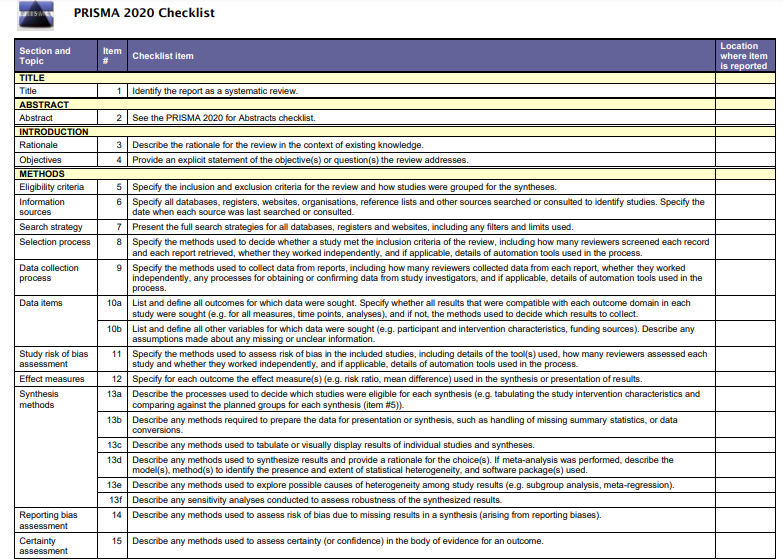Understanding and using the PRISMA checklist – meaningfully
The Preferred Reporting Items for Systematic Reviews and Meta Analyses (PRISMA) checklist is a list of items related to how systematic reviews and meta-analyses should be reported.
Features of PRISMA checklist
The PRISMA checklist includes points concerned with every aspect of systematic reviews and meta-analyses, including specific guidelines for the Introduction, Methods, Results and Discussion (IMRAD) sections, as well as some related elements of information, all of which constitute a highly valuable reference. These points can be referred to both by the author(s), to help maintain a high standard of transparency and rigour, as well as reviewers, to ensure that a submission they are reviewing ticks all the right boxes.
Purpose of PRISMA checklist
One of the key reasons that the checklist exists is to help researchers compare several reviews, which is made possible by every review addressing the same set of criteria. It also ensures that the reviews are conducted with rigour and helps authors to remember to include everything necessary to present an unbiased review. This way, a higher standard is achieved by challenging the authors to interrogate, or re-examine, what they are writing.
PRISMA 2020
The latest revision (at the time this article was written/published) of the PRISMA checklist is the 2020 version, which comprises 27 points. They range from seemingly trivial points, such as stating in the title that your piece is a systematic review, to more complex ones, such as describing limitations around review processes or evidence used.

Page 1 of the PRISMA 2020 checklist
Using the PRISMA checklist… meaningfully
Accessing the list is as simple as finding it on the PRISMA website (after an online search, if needed) and making sure you are using the latest version. Using it, however, can be somewhat tricky to do truly meaningfully.
Ticking off the items…
If you regard it only as a checklist, it is tempting to see the whole endeavour simply as a “box-ticking exercise”, where you tick something off as soon as you spot something in your work that somewhat fulfils the criteria, and move on.
…Versus carefully considering each item
To use it in a genuinely meaningful way, we encourage that you engage more deeply with it and to let yourself be challenged by it. Think of it as a helpful list to investigate and determine whether you have fully explored a subject.
Tip: Ask yourself the following question at least twice as you’re going through the list and be very honest with your answers:
Have I definitely done this?
This will ensure that you are delivering the highest quality piece of work you can. You could even ask a peer (or use a scientific review service) to review your work using the list, as they may have a different viewpoint from your own.
Summary
Writing a systematic review or meta-analysis is in itself a challenging undertaking, which is made somewhat easier with the PRISMA checklist. Very few other types of scientific writing have such clearly defined and widely accepted criteria that can be used as a guide. So, use the checklist to its full potential to get the most out of it.
Maximise your publication success with Charlesworth Author Services.
Charlesworth Author Services, a trusted brand supporting the world’s leading academic publishers, institutions and authors since 1928.
To know more about our services, visit: Our Services